Discover 7 hidden attractions, cool sights, and unusual things to do in Yoshino (Japan). Don't miss out on these must-see attractions: Kimpusen-ji, Yoshino Mikumari Shrine, and Yoshimizu Shrine. Also, be sure to include Yoshino Shrine in your itinerary.
Below, you can find the list of the most amazing places you should visit in Yoshino (Nara).
Table of Contents
Kimpusen-ji
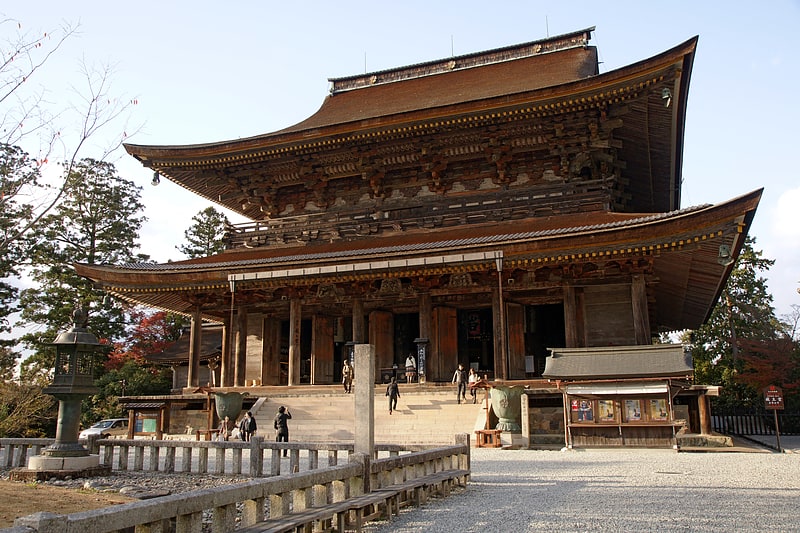
Also known as: 金峯山寺
Temple in Yoshino, Japan. Kinpusen-ji is the head temple of a branch of the Shugendō religion called Kinpusen-Shugendō in Yoshino district, Nara Prefecture, Japan. According to tradition, it was founded by En no Gyōja, who propagated a form of mountain asceticism drawing from Shinto and Buddhist beliefs. Along with Ōminesan-ji Temple, it is considered the most important temple in Shugendō.
The temple's main building, the "Zaō-Hall" (Zaōdō) dedicated to Zaō gongen (蔵王権現), is the second largest wooden structure in Japan after the Great Buddha Hall at Tōdai-ji in Nara. Kinpusen-ji is a junction in a series of stops on pilgrimage routes.
A Shinto shrine dedicated to Inari Ōkami is attached to the main compound. In 1963, the Temple constructed a hall named Southern Court Mystic Law Hall (Nanchō Myōhōden) to appease the soul of the four emperors of the Southern Court and others who lost their lives in many battles since the "Northern and Southern Courts period" (Nanboku-chō period, 1336–1392). The principal image is the statue of Gautama Buddha (Shaka Nyōrai).
In 2004, it was designated as part of a UNESCO World Heritage Site under the name Sacred Sites and Pilgrimage Routes in the Kii Mountain Range.[1]
Yoshino Mikumari Shrine
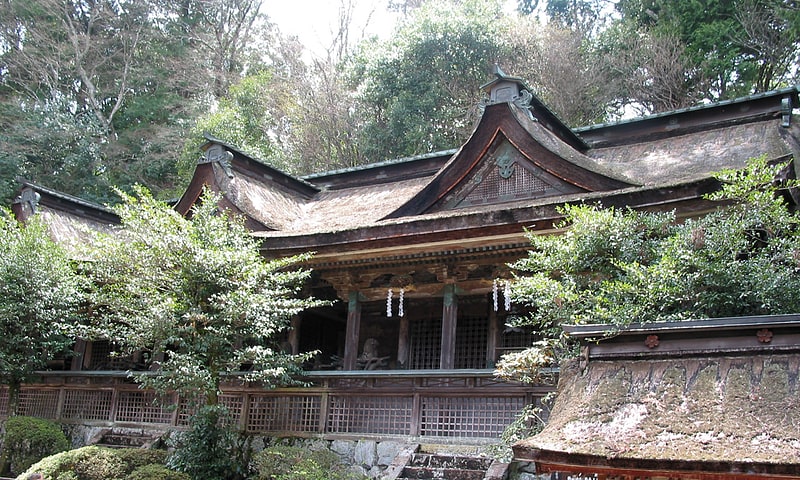
Also known as: 吉野水分神社
Shrine in Yoshino, Japan. Yoshino Mikumari Shrine is a Shinto shrine located on Mount Yoshino in Yoshino district, Nara, Japan. It is closely associated with Emperor Go-Daigo.
The Shrine is dedicated to mikumari, a female Shinto kami associated with water, fertility and safe birth. Yoshino Mikumari Shrine is one of four important mikumari shrines in the former province Yamato. The shrine also houses six kami that are more or less related to mikumari (Takami-musubi-no-kami, Sukuna-hiko-no-kami, Mikogami, Ama-tsu-hiko-hi-no-ninigi-no-mikoto], Tamayori-hime-no-mikoto, and Yorozu-hata-toyo-akitsushi-hime-no-mikoto). A wooden statue of the deity Tamayori hime is registered as a National Treasure of Japan.
The present-day buildings go back to 1605, when Toyotomi Hideyori rebuilt the shrine, as his father Toyotomi Hideyoshi once had prayed here for a son and successor. The main hall (honden), an Important Cultural Property,is an unusual structure 9 ken long and 2 ken wide. Built in the nagare-zukuri style, it has however an independent 1x1 ken unit in the kasuga-zukuri style at the center. The three resulting edifices all lie under the same bark roof, which has three dormer gables.
In 2004, it was designated as part of a UNESCO World Heritage Site under the name Sacred Sites and Pilgrimage Routes in the Kii Mountain Range.[2]
Address: 1612 Yoshinoyama, 639-3115 Yoshino-cho
Yoshimizu Shrine

Also known as: 吉水神社
Shinto shrine in Yoshino, Japan. Yoshimizu Shrine is a Shinto shrine located on Mount Yoshino in Yoshino district, Nara, Japan. It is dedicated to Emperor Go-Daigo, and the samurai Kusunoki Masashige.
In 2004, it was designated as part of a UNESCO World Heritage Site under the name Sacred Sites and Pilgrimage Routes in the Kii Mountain Range. In 2014 the temple was embroiled in a scandal when it was discovered that head priest Satō Kazuhiko's private blog contained extreme hate speech towards Chinese and Koreans, in addition to him being the head of a local right-wing extremist group.[3]
Yoshino Shrine
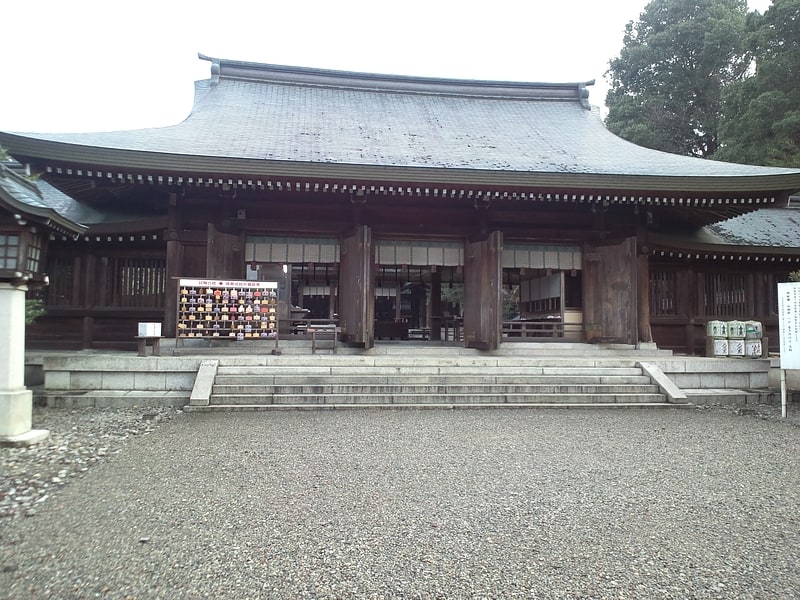
Also known as: 吉野神宮
Shinto shrine in Yoshino, Japan. Yoshino Shrine is a Shinto shrine located in Yoshino, Yoshino District, Nara Prefecture, Japan. Prefecture, Japan. It was founded in 1892. The main kami enshrined here is Emperor Go-Daigo. The shrine's main festival is held annually on September 27. It was formerly an imperial shrine of the first rank in the Modern system of ranked Shinto Shrines.
It is one of the Fifteen Shrines of the Kenmu Restoration.[4]
Address: 3226 Yoshinoyama, 639-3115 Yoshino-cho
Yoshino Ropeway
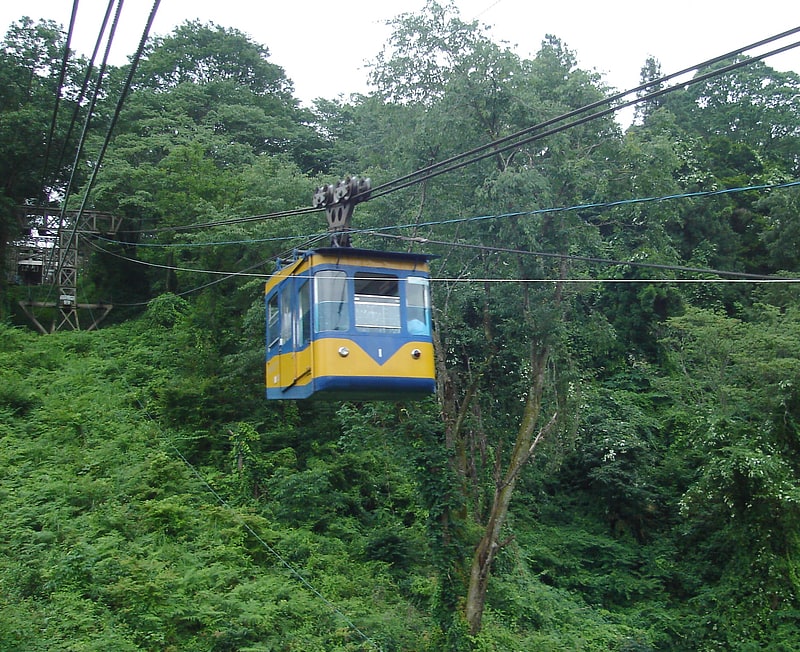
Also known as: 吉野ロープウェイ
The Yoshino Ropeway is an aerial tramway in Mount Yoshino, Yoshino, Nara, Japan, operated by Yoshino Ōmine Kēburu Ropeway Bus Co. Ltd. This is the oldest surviving aerial lift line in the nation. The line opened on March 12, 1929, a year after Yoshino Railway, the current Kintetsu Yoshino Line, opened the railway line to Yoshino Station. The line uses two cabins, named Kaede and Sakura. The cabins have stair-like floors; the classical style that has become uncommon nowadays. Although the cabins and cables have been updated, the spans are still those constructed in 1928. The line is not only a sightseeing line to Mount Yoshino, but also a local transport for residents there. As such, there is a commuter pass available.[5]
Nyoirin-ji Temple Treasure House
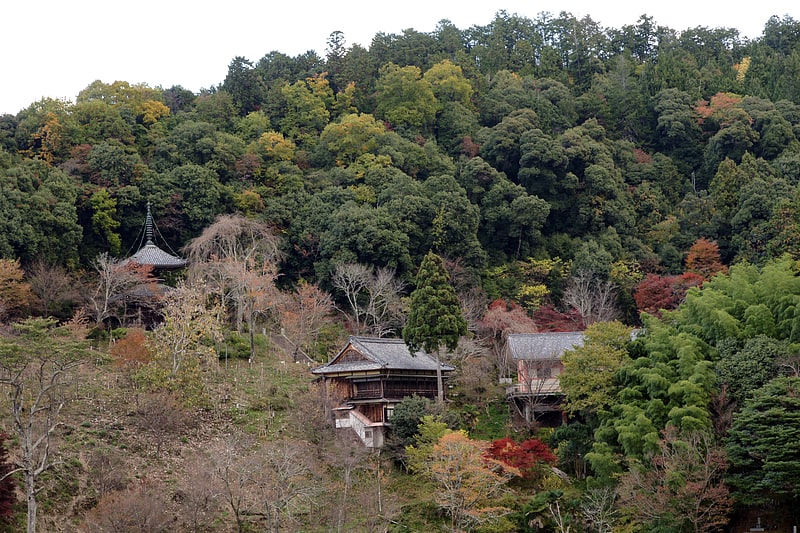
Nyoirinji Temple is a temple of the Jodo sect located in Yoshino-cho, Yoshino-gun, Nara Prefecture. The temple is located in Yoshino-cho, Yoshino-gun, Nara Prefecture. The main deity is Nyoirin Kannon. Behind the main hall are the tombs of Emperor Godaigo's mausoleum and Prince Setai's tomb.
Sakuramotobo
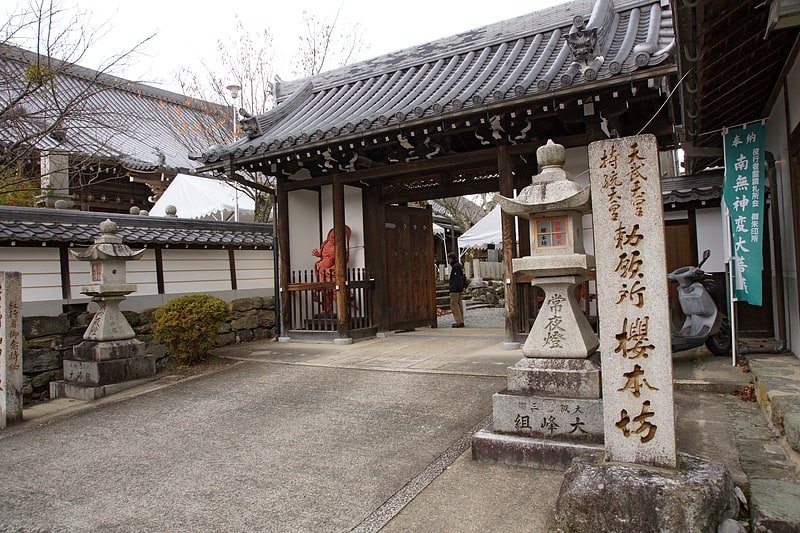
Sakura Honbo is a separate head temple of the Kinpusan Shugen sect in Yoshino-cho, Yoshino-gun, Nara Prefecture. It is also one of the five Ominesan-ji Temple's five guardian temples. The main deity is Shinhen Daibosatsu. The temple is a temple of the Yamabushi culture and has many cultural assets. The temple is a temple dedicated to the sacred site of En no Gyoja. The official name is Sakurabonbo.
Address: 1269 Yoshinoyama, 639-3115 Yoshino-cho